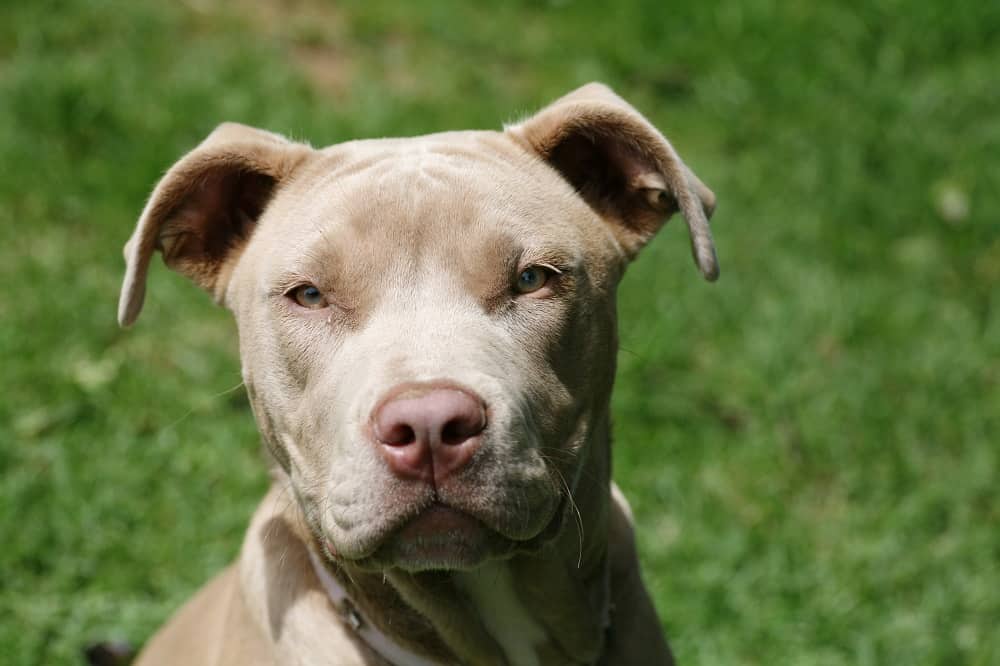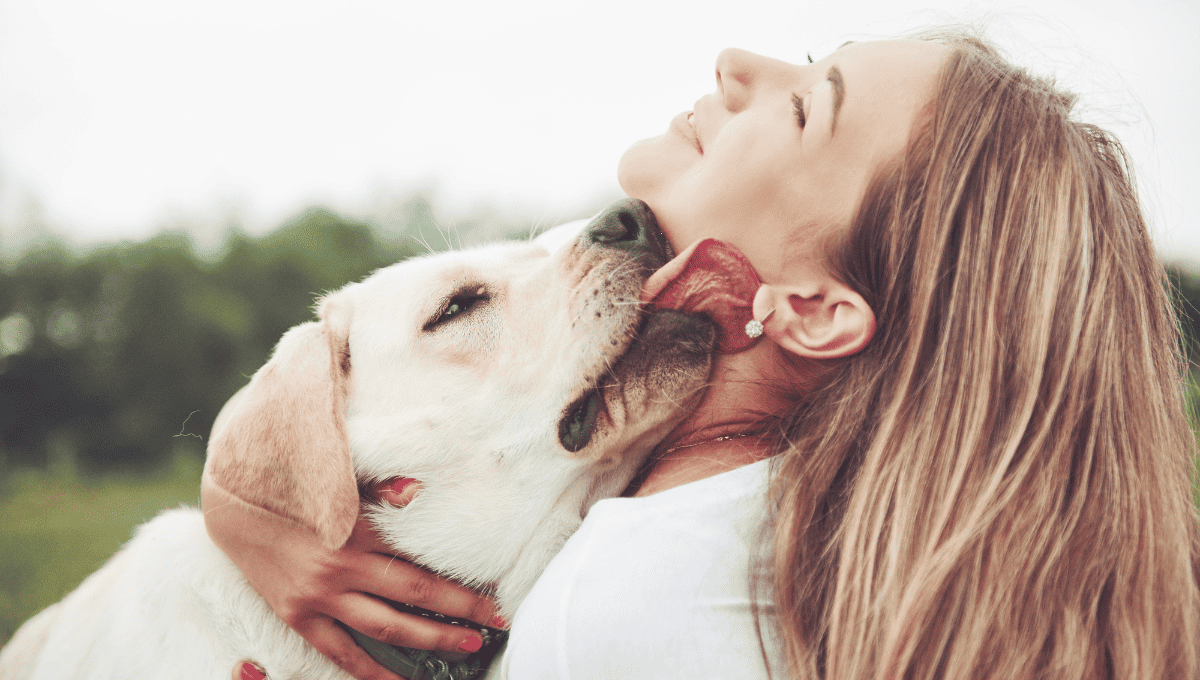When Bella didn’t fall pregnant for a second time, the puppy mill owners planned to shoot her. It’s cheaper to shoot an infertile dog than to euthanise her. When a Brisbane foster carer from dog rescue agency Labrador Rescue came to Bella’s aid, she was one of forty pure-bred Labradors, penned in small cages, malnourished, and very frightened.
Today, Bella lives in a Brisbane suburb with a family of five. She even sleeps on Mr. 8’s bed and has a fondness for sweet potato chips. But she didn’t move straight in with her family, as a rescue organisation dog, she was first sent to live with foster carers who spent months helping her ‘unlearn’ what life is like, and showing her that things can be better.
What you must know before adopting a Brisbane rescue dog
If you take a trial with a rescue dog and then “fail the adoption” – aka give the dog back, you will be further contributing to the dog’s trauma. It’s vital that you understand what’s involved in taking on a rescue dog before you dive in.
Adopting a rescue dog isn’t like raising a dog from a pup. Rescue dogs will display unusual behaviours depending on their circumstances. A rescue dog that’s been in a pound for some time may be gleeful to be with you, but have poor socialisation and ‘living inside” skills. A dog rescued from an abusive situation may show exaggerated startle reactions or cower away from you. Or not. Every dog is different, the only way to help a dog in need is to offer plenty of patience and kindness.
The aggression myth
There are thousands of dogs in the ‘rescue process’ in Australia. For every dog that is rescued, countless dogs are put down. Dogs are surrendered by owners for any number of reasons, but as Brisbane’s housing crisis escalates, so do the number of families unable to keep a much-loved pet. Many of the dogs that find themselves homeless have been discarded by stressed out new parents who can’t take care of a fur, and human baby. Other dogs are surrendered when an owner falls ill or moves to assisted living facilities.
Some dogs are rescued from traumatic situations like dog fighting rings, puppy mills or abusive homes. Even in these tragic cases, most breeds become timid rather than aggressive. There are plenty of reasons dogs are surrendered and very few involve a dog that has been exposed to violence. It’s a misconception that rescue dogs are dangerous (although it’s best to always take care around dogs you don’t know!) Dogs that display aggressive behaviour in a Council pound are unlikely to be recommended for adoption. Sadly, these are the dogs that are euthanised before they can be introduced to the adoption process.
Why are there so many Bull Arabs, Mastiffs and Pitbulls in dog pounds?

If you’ve ever tried to adopt a rescue dog from a pound, you’ll notice a trend. If you’re after anything with bull in the name, you’ll be spoiled for choice but there’s very few “other” breeds available. While some of it comes down to over breeding, unpopular breeds and the fact that many of these dogs are just very big dogs, it may also be about dog rescue organisations in Brisbane. Labradors, chihuahuas, greyhounds and other breeds each have their own rescue networks. These organisations will go to over-crowded council pounds and collect dogs of that specific breed and place them with foster families who have experience training that breed. The foster family work with the dog to improve their behaviour and organise vet care. There’s a rescue organisation in Brisbane for just about every breed including:
- Adopt a Labrador
- Adopt a Golden Retriever
- Adopt a Greyhound (there’s quite a few of these)
- Adopt a Chihuahua
- Adopt a Pug
- Adopt a Shepherd
- Adopt a Bulldog
- Adopt a Collie
- Adopt a Poodle
Where to adopt a rescue dog in Brisbane
Private adoptions:
Usually these happen via Pet Rescue, via sites like Gumtree or rehoming groups on social media. These can be ideal if you do not fit the standard criteria for rescuing via a rescue agency or pound. Be sure to spend a little time with former owner and the dog before you decide, as there’s no sending a private adoption back. You’ll sadly, find hundreds of dogs to choose from in these groups. Not all of these dogs will be well trained and cared for. Make sure that they come with a full health history and that they’re not the product of unethical breeding. These adoptions are often “free to good home”. If the pet carries a substantial adoption fee, you may be buying “surplus stock” that a puppy mill couldn’t sell through a pet shop or from a backyard breeder. Remember anyone who owns a pregnant dog can get a breeding permit in Brisbane.
Shelter or Pound rescues:
Local Councils, RSPCA, Animal Welfare League and “independent dog shelters” like Peninsula Animal Aid or Death Row Unchained provide accommodation for surrendered dogs (and cats, horses, pigs…you name it). The accommodation is usually stark (these are generally underfunded and at least partially volunteer run organisations) so abandoned animals are generally very happy to find a forever home. Adoption fees from these organisations are usually modest (and during periods of overcrowding they may host $50 adoption days) and the criteria for adoptions, while not as loose as some private adoptions, are easier than through rescue agencies.
Rescue organisations:
Dog rescue organisations usually focus on a specific breed and recruit volunteer foster parents experienced with that breed to assist in the rehabilitation process. The dogs are not generally kept in a facility but are billeted out to foster family homes. Labrador Rescue for example, operates across multiple states and has dozens of foster families (and always need more) experienced in training and rehabilitation of the labrador breed. They also organise for interstate transfers if there are no foster parents available in a specific location. To adopt a dog through a rescue organisation, you’ll need to fill in a comprehensive application and then wait for a suitable dog to become available.
Where to adopt a rescue puppy in Brisbane
Rescue puppies aren’t very common. While the occasional litter of pups will be surrendered to a pound, they’re usually snapped up very quickly. Most rescue dogs are older dogs. While you may be dreaming of a fuzzy little face, remember that having a puppy is like having a “baby lite” where the baby likes to eat shoes. Sleepless nights, toilet accidents, puppy pre-school, all that training stuff… if you’re dying to train up a pup, you may need to apply to a reputable, registered breeder for your new baby. A purebred puppy is generally upwards of $2000. Pups listed on marketplace websites or in “low rent pet shops” may be the result of “backyard breeders” or worse, puppy mills. It’s never advised to buy from a backyard breeder or puppy mill. Remember Bella? Her story is not unique. Puppy mills are hellscapes for these young dogs.
How much is it to adopt a dog through a rescue organisation?
It costs from $200 – $1500 to adopt a dog through a rescue organisation. This will differ from organisation to organisation. Rescue organisations usually determine fees according to the dog’s age and health. Older dogs will likely be cheaper. These organisations are not-for-profit and staff and foster families are volunteers. All dogs are desexed and receive comprehensive medical checks, worming, vaccinations and flea treatments. If necessary, they may even receive comprehensive surgical treatments before they’re made available to adopt. While there are so many wonderful vets that give discounted services to rescue organisations, there are still substantial fees involved in rescuing dozens or hundreds of dogs a year. These fees may be partially crowd funded, but your adoption fee covers some of those costs.
What happens to a dog once it is surrendered to a rescue agency?
The rescue agency sends a foster carer to collect the dog. The carer will try to get as much history as they can but sometimes there is none to get. The carer observes the dog for any behavioural or health issues, keeping a record for future owners. The dog is then desexed (if needed), wormed, flea treated, vaccinated and provided with any medical care required.
The foster carer keeps a comprehensive medical record for the dog, and works on any behaviours that require correcting before adoption. This could involve socialising the dog, toilet training, exercising the dog (Labrador Rescue especially gets a lot of chonky bois and girls as labs do love a snack), teaching the dog to walk on a lead, curbing bad behaviours like barking, doing basic “living in a house” training and helping the dog to overcome any fears or problems of their former life. This could be as simple as the dog having never used stairs, or as complex as a dog living outside a cage for the first time. This can take anywhere from a couple of weeks to several months. Why? Because the only goal of a foster parent is to ensure that the dog finds the right home and passes their trial. A well behaved, healthy dog is more likely to be welcomed into a quality home as their next family pet.
How to adopt a rescue dog in Brisbane
With a pound or private adoption, it’s as simple as paying the Council registration fee and transferring over the microchip. Some shelters may require an interview and a “play date” with any existing pets to ensure that the adoption will be successful. Nobody wants to see an adoption fail, especially the dog, who has already been through so much. With a rescue organisation, the adoption process is more rigorous.
Matching families with foster dogs

If you are going to rescue a dog in Brisbane, you will need to complete a thorough application and may be required to provide evidence of you right to house a dog (if in a rental for example) and that your house is suitable (fencing, other pets etc). You will then need to wait as this information is used by the agency to find suitable matches.
Once a dog is ready for adoption, the foster carer will make recommendations for the kinds of owners best suited to the dog’s personality. A fit boisterous dog may be recommended for families with school aged kids. A gentle, older dog may go to a retired couple. This is the difference with adopting via a rescue organisation, there’s every chance the dog will be a perfect fit for your family.
What’s the process for adoption through a rescue organisation?
While all foster agencies operate differently, the general process for “matching you” to your new dog involves:
- Your application will be considered with other suitable applications and then the foster carer will approach a “short list” of potential fur parents.
- If you “hit it off” with the dog, you’ll complete some paperwork and pay the adoption fee. You’ll be provided with the dog’s medical history, worming and vaccination schedule, dietary information and key details for her care.
- You’ll then start a two-week trial period to make sure it’s a perfect fit. During this time you can ‘fail the adoption’ at any time and get your adoption fee returned. This is the worst possible outcome for the dog, who has had their routine disrupted.
- If everyone’s happy at the end of the trial period, the organisation will “sign over” the dog’s microchip to you, she’s your forever dog now!
Should you let a dog rescue you?

While the idea of adopting a rescue dog sounds kind and generous, you may well find that the dog rescues you. A dog that’s been through a major disruption and found a safe place to land, will give you their furry heart and soul. They’ll be the best friend you’ve ever met and surprise you with their quirks and their adoration. When you rescue a dog, make no mistake, they’ll rescue you right back.

